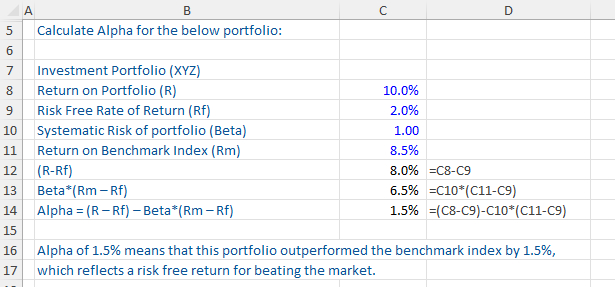Active vs Passive Investing
April 16, 2021
What is “Active vs. Passive Investing”?
Investors can use a range of investing strategies and one of the key decisions that they make is whether to use an active or passive strategy.
Active investing is where the investor – or portfolio manager – makes active investment decisions. This includes deciding asset allocation, sector allocation and individual security selection. The aim of this approach is to generate higher returns than the benchmark index, so this approach requires detailed research to identify investment opportunities.
Passive investing is where the investor seeks to match the returns of an index, by investing in a fund that reflects the constituents and weightings of the index, such as the S&P 500. This is the reason that passive investing is sometimes referred to as index investing. Although it might seem like passive funds require no effort to maintain, index constituents change regularly and these changes must be mirrored in the holdings of the fund. However, passive funds are often lower in cost than actively managed funds as some of the decisions and investment processes can be automated.
Key Learning Points
- Active investing strategies require an investor or portfolio manager to make investment decisions. The aim is to generate higher returns than the benchmark index (‘Alpha’)
- Passive investing strategies involve investing in index funds, which track a market index. The aim is to replicate the performance of the index (‘Beta’)
- Passive funds have grown in popularity in recent years, resulting in new indexes and funds which focus on a particular risk factor or theme. These are sometimes referred to as ‘Smart Beta’
- Passively managed funds typically charge lower fees than active funds
Understanding Active and Passive Strategies
Passive funds have grown in popularity in recent years – particularly since the global financial crisis. It is therefore helpful to understand active and passive strategies in more detail:
- Active strategies allow investors to exploit market inefficiencies and therefore generate returns that exceed those of the underlying market. Portfolio returns in excess of market returns are referred to as ‘Alpha’;
- Passive strategies, by definition, aim to replicate market returns. Since the benchmark return is referred to as ‘Beta’, passive strategies are sometimes referred to as beta strategies;
- As the popularity of passive investing has grown, so has the range of indices published by index providers. These now include indexes that focus on a particular theme, such as value or ESG. Passive strategies which focus on a particular theme are sometimes referred to as ‘smart beta’ as the index focuses on a particular risk factor;
- Passive strategies are typically lower in cost than active strategies as they don’t require active stock selection. However, passive strategies are not ‘cost free’ as they still incur transaction costs as index constituents changes.
Capital Asset Pricing Model (CAPM)
Investors often reference the terms ‘Alpha’ and ‘Beta’ when discussing the returns generated by active and passive investment strategies. These terms are derived from the Capital Asset Pricing Model (CAPM) which expresses the return of a portfolio using the following formula:
R = Rf + Beta (Rm – Rf) + Alpha
Where R represents the rate of return on the portfolio, Rf is the rate of return that is risk free, Beta reflects the systematic risk of the portfolio, Rm is the overall return on the market and Alpha reflects the risk free return.
Alpha is particularly important for active strategies as it reflects the “risk free” reward for beating the market and is therefore used to indicate whether a strategy or a portfolio has managed to outperform the market or the benchmark index that it closely correlates with. Essentially, Alpha reflects how well an investment has performed and represents the performance of a portfolio relative to its benchmark.
For example, suppose a fund XYZ has a rate of return of 5.0% over a 12 month period compared to 4.0% return on the benchmark index, then in this scenario Alpha is 1.0. An Alpha of 1.0 means that the portfolio’s performance has outperformed its benchmark index by 1.0%.
On the other hand, if Alpha is -1.0, this means that the portfolio’s performance has underperformed its benchmark index by 1.0%.
*Below is a workout that demonstrates how to calculate Alpha.
